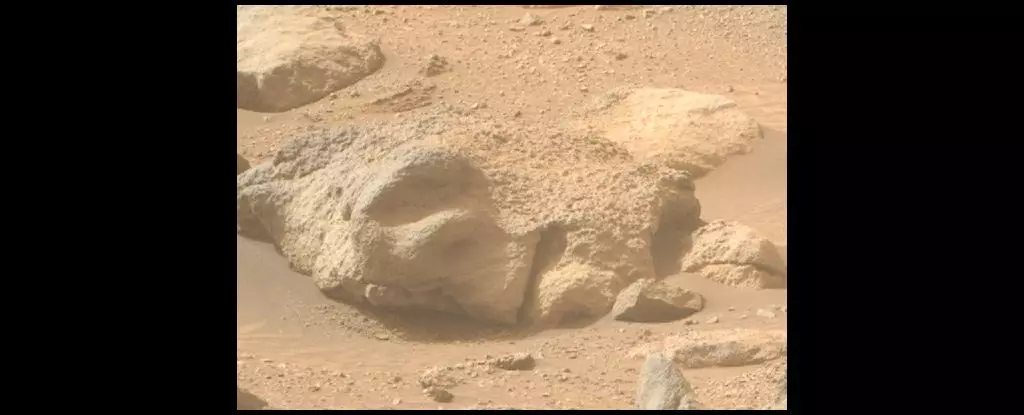In the realm of Mars exploration, pareidolia—the human tendency to perceive familiar patterns, particularly faces, in random stimuli—continues to captivate both scientists and enthusiasts alike. The latest sensation erupted from an image taken by NASA’s Perseverance rover, showing a rock that chillingly resembles a lifeless human head lying on the Martian surface. However, beneath the surface of this eerie image lies a world of geological processes and cognitive phenomena that bear investigation.
The photograph, captured on 27 September 2024, presents a strikingly shaped piece of sedimentary sandstone, camouflaged amid countless other rocks on Mars. For many, this phenomenon ignites curiosity but also a tinge of unease, prompting questions of whether life ever thrived on the red planet or if we are merely victims of our own visual perception. The truth is that pareidolia is not exclusive to the dusty terrains of extraterrestrial environments—it is a quintessentially human quirk, deeply rooted in our neuropsychological makeup.
Pareidolia occurs when our brains instinctively interpret ambiguous stimuli as something significant, often manifesting as faces or humanoid shapes. This reaction is so prevalent that scientists link it to an evolutionary advantage; recognizing faces quickly could have implications for survival in social environments. Our brains are wired to identify patterns, and this inherent trait can lead us to mistake rocks for humans, animals, or even intricate objects.
Researchers have delved into the mechanics of pareidolia, identifying specific brain regions involved in facial recognition. The fusiform gyrus, responsible for distinguishing faces, provides insight into why we see familiar shapes in otherwise random arrangements. In many ways, this phenomenon amplifies our connection to Mars, as we strive to draw parallels between our terrestrial experiences and the enigmatic landscapes of another world.
While the sensationalism surrounding images of Martian pareidolia thrives, it is crucial to ground such discussions in geological science. The rock in question is a testament to the forces that have shaped the Martian landscape over millennia. Like Earth, Mars possesses an array of rocks, each telling stories of past climatic and environmental conditions. The sandstones encountered by Perseverance imply that water once flowed through ancient riverbeds, sculpting the terrain in ways that, under certain lighting conditions, may resemble organic forms.
Understanding the context of these formations is imperative. The illusion created by the rock’s unique weathering and orientation should be viewed through the lens of scientific inquiry rather than sensationalism. The fascination with these phenomena should inspire deeper explorations of Mars’s potential habitability and its geologic history, rather than solely fixating on superficial resemblances to human features.
The Martian landscape may not harbor the remnants of advanced civilizations as some speculations suggest. So far, there is no conclusive evidence for complex life forms existing or having existed on Mars. Yet, the curiosity and desire to explore are vital drivers of the human spirit. NASA and international space agencies are poised to embark on crewed missions to Mars, with hopes of uncovering the planet’s mysteries. Each exploration challenges the boundaries of human knowledge, pushing the envelope of what it means to seek understanding beyond our home planet.
As future missions venture into Martian terrain, we might find ourselves becoming the very aliens we seek to learn about. Our objects, footprints, and perhaps even small samples left behind could mirror the enigma we feel towards Martian pareidolia, generating a spectrum of interpretations for explorers yet unknown.
The intersection of science and human imagination is beautifully illustrated through our encounters with Martian pareidolia. The curious observation of a rock resembling a human head encapsulates our inherent desire for meaning and connection. It reminds us that while we may often see faces in the void, there is much more to discover on this fascinating planet. Rather than being solely distractions or a mere manifestation of our quirks, these moments can ignite a relentless pursuit of knowledge about Mars’s past, present, and potential future. Ultimately, the allure of pareidolia serves as a gateway—a reminder of the boundless possibilities that lie just beyond our understanding.


Leave a Reply